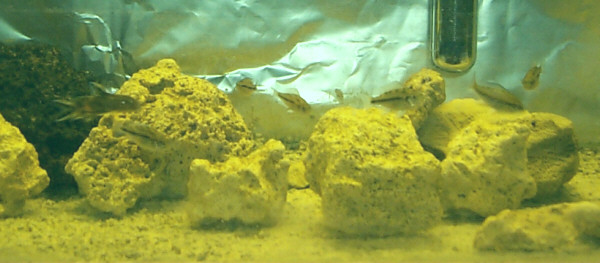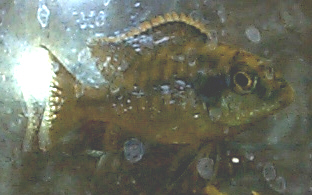
| The
Burrow Main Menu |
| Slink's Tropical Fish |
Baensch (1996): Aquarium Atlas Volume 3 p 782, 12cm, "feeds off aufwuchs on rocks and the micro-organisms contained therein as well as planktonic foods"
Konings (1990): Book Of Cichlids And All The Other Fish Of Lake Malawi p 240-243, 13 cm, sediment-free rocky habitat; mine look most like the one from Namalenje Island on page 243
Axelrod (1993): The Most Complete Colored Lexicon Of Cichlids p 328, 5", "vegetarian that also eats invertebrates"
Red Empress, bought locally, one known male and three hoped-for females which turned out to be one dominant male, two females, and one dead subdominant male even before I got the fish out of quarantine. The subdominant male could be told from the females by a very thin line of yellow on his dorsal fin, which is much wider on the dominant male pictured below. Otherwise he was identical in appearance to the females.
Young male.

One of the young females.
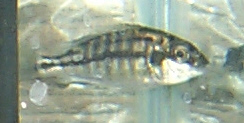
Not too long after having been moved to the 75-gallon tank from their 30-gallon quarantine quarters the now resplendent male spawned with the larger female. Evidentially we did not agree on "young" in their case, which is why the subdominant male got killed when I thought there was plenty of time to arrange other housing. All of these fish continue to surprise me with their precocity.
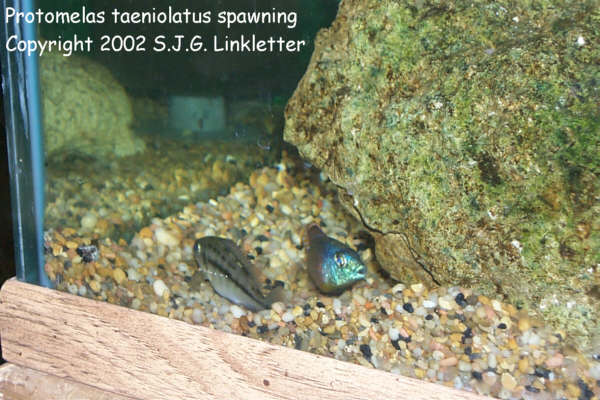

The male dug a spawning pit in the gravel, and I was concerned that my plan to convert the bottom to ceramic tile might put him off his stride. Not a chance. In June the larger female was holding again. (The earlier batch vanished during a tank rearrangement.)
Red Empress female holding (30/JUN/2002) , proof that the ceramic tile didn't throw the male Red Empress off his stride.
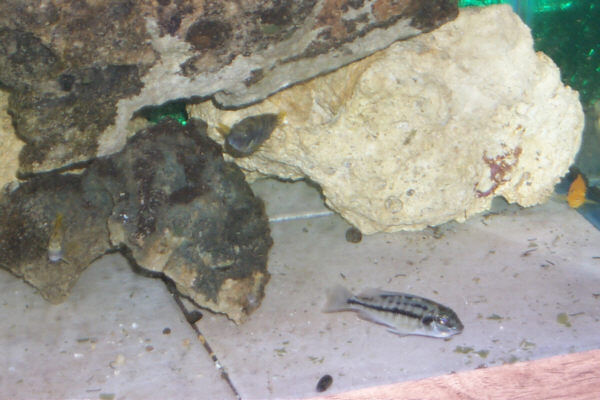
Here she is a few days later (04/JUL/2002) with the product of her efforts.

Both females had broods at this time. The smaller female released 5 fry and proceeded to forget about them. The larger female released about a dozen fry two days later and persisted in collecting them back up until they finally fled from the sight of her. I find it significant that a month later the five fry from the smaller female are about half-an-inch long while only one slightly smaller fry remains from the brood of the larger female and it has a deformed spine. The larger female was also ready to breed again faster than the smaller one. It seems she is faster to produce larger broods but her judgement on mothering is a bit lacking.
Curiously, these fish eat while they are holding eggs. I have not seen any of my other fish do this, not even my Lake Victorian haplochromines. The larger female was eating food the same day as she spawned this last time. I wonder if this is what enabled her to spawn again so quickly, and if it had anything to do with the deformed fry.
Remaining 6 fry on 04/AUG/2002, about one month out of the mouth. They are about 3/4" long, counting the tail. The larger female spit her next batch the day this photo was taken, making it one month exactly between batches for her.
